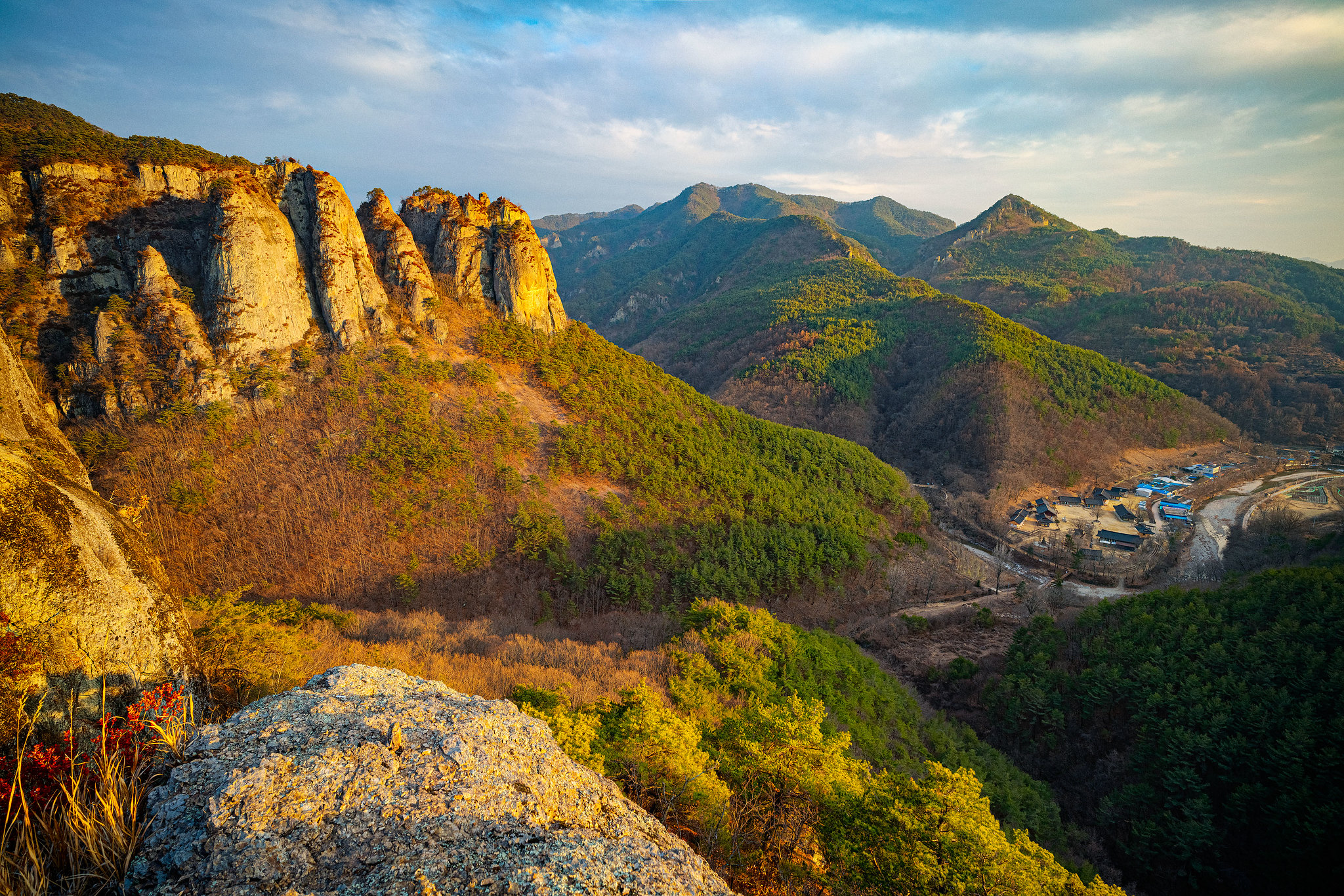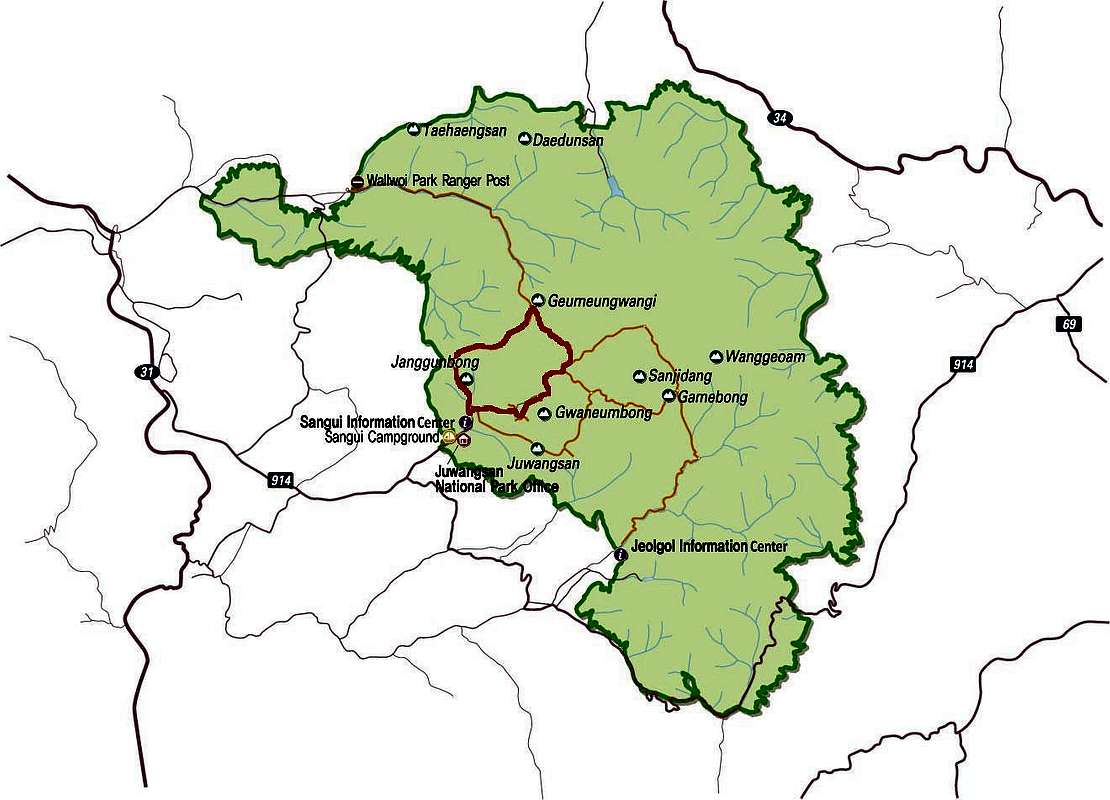-
 3373 Hits
3373 Hits
-
 73.06% Score
73.06% Score
-
 3 Votes
3 Votes
|
|
Area/Range |
|---|---|
|
|
36.39704°N / 129.14600°E |
|
|
Hiking, Scrambling |
|
|
Spring, Summer, Fall, Winter |
|
|
Overview
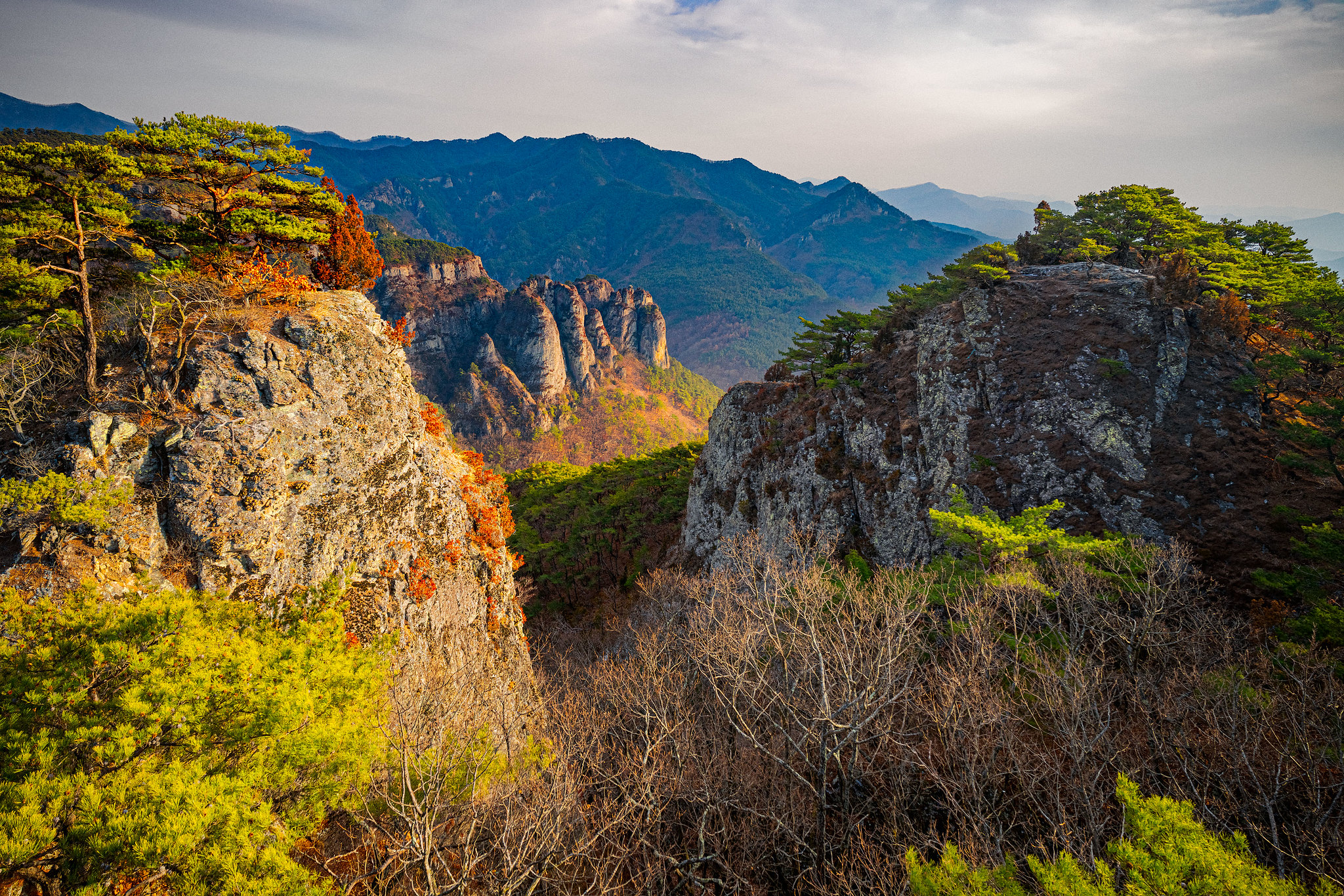
Lava Cone View from Janggunbong
Juwangsan National Park was designated as the 12th national park in Korea in 1976. It borders Cheongsong-gun and Yeongdeok-gun in Gyeongsangbuk-do, While occupying an area of 107.273㎢.
Juwangsan(720m), Taehaengsan(933m), Daedunsan(905m), Myeongdongjae(875m), and Wanggeoam(907m0 are connected in a horseshoe shape while creating a beautiful mountain scenery. This circumstance makes it a natural fortress. Geologically, the lava flows of 70 million years ago made a round formation of ignimbrites, or volcanic cones, which shows how this unique and beautiful scenery was created.
Juwangsan has been well-known as the best scenic spot in Gyeongsangbuk-do(Province) and regarded as one of the top three rocky mountains in Korea thanks to its breathtaking scenery by the beautiful nunataks and valleys.
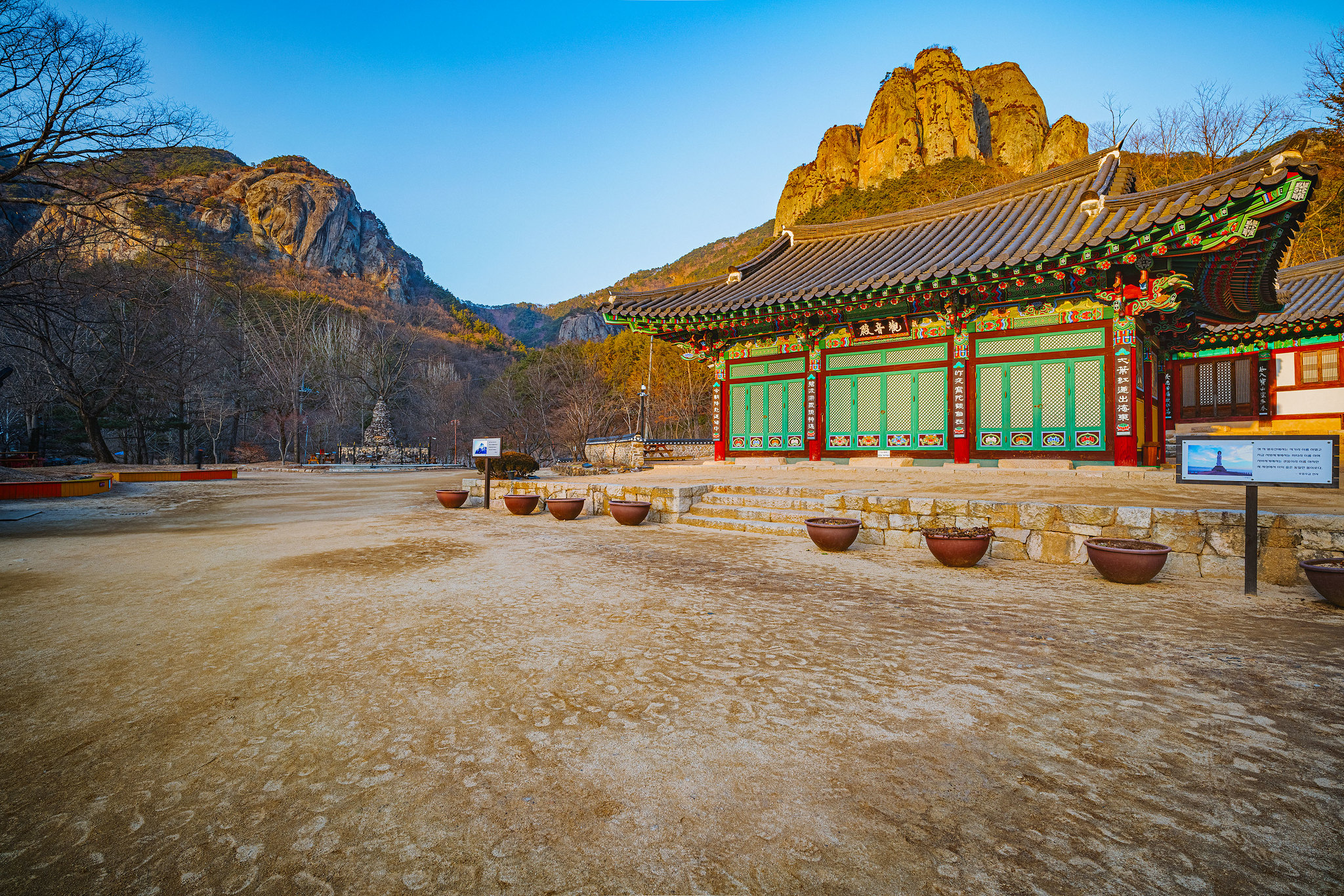
Temple at the park entrance
In the late Tongilsilla dynasty, the rebel Judo, who called himself juwang (King of Zhou) attempted a coup dé tat against Tang dynasty of China and fled to this mountain. So, now this mountain is called Juwangsan (the Mountain of King Ju).
There are 88 plant species including endangered species such as the Nodding lily, Tattaasau and Yellow water flag in Juwangsan National Park. As for animals, 924 animal species inhabit the park area and among them the Otter has been designated as a Natural Treasure.

Waterfall into a frozen river

Janggunbong Summit Stone
Hiking Overview
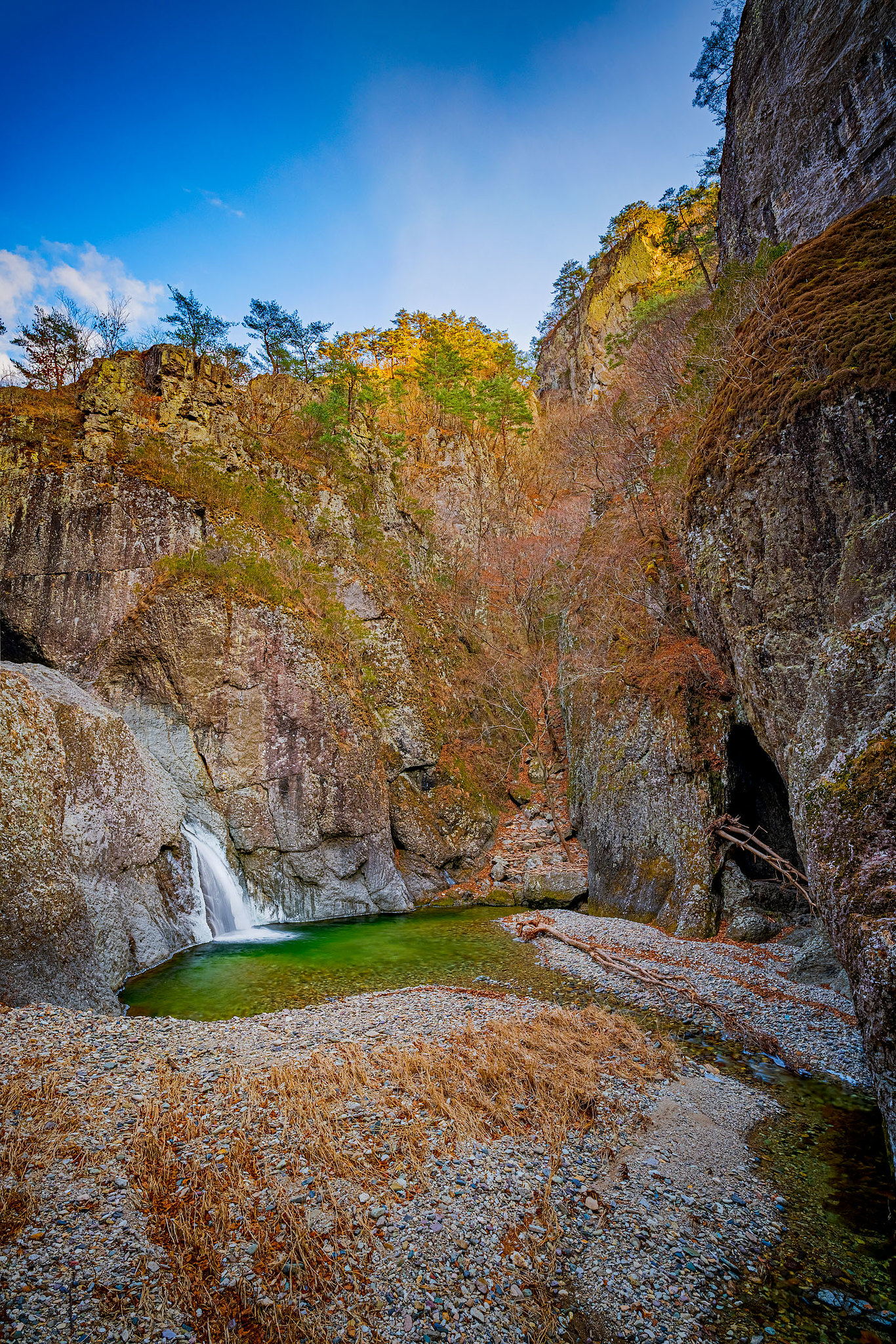
The road leading into the park is lined with cafes and restaurants, so plenty to eat and drink before/after depending what time you start and finish.
There is a small fee to enter the park when you pass the temple.
Lastly, there is a "forest library" along the valley trail. I'm not sure what it is for, I was there in winter so it wasn't open. There is a coffee shop near the campground on the north side of the river that was really cool, and had great coffee, I stopped there every night for the 3 nights I camped there.

The entrance to the park is marked by a small temple underneath this parks signature geologic feature, which is a cluster of lava cones that have been revealed over time by erosion.
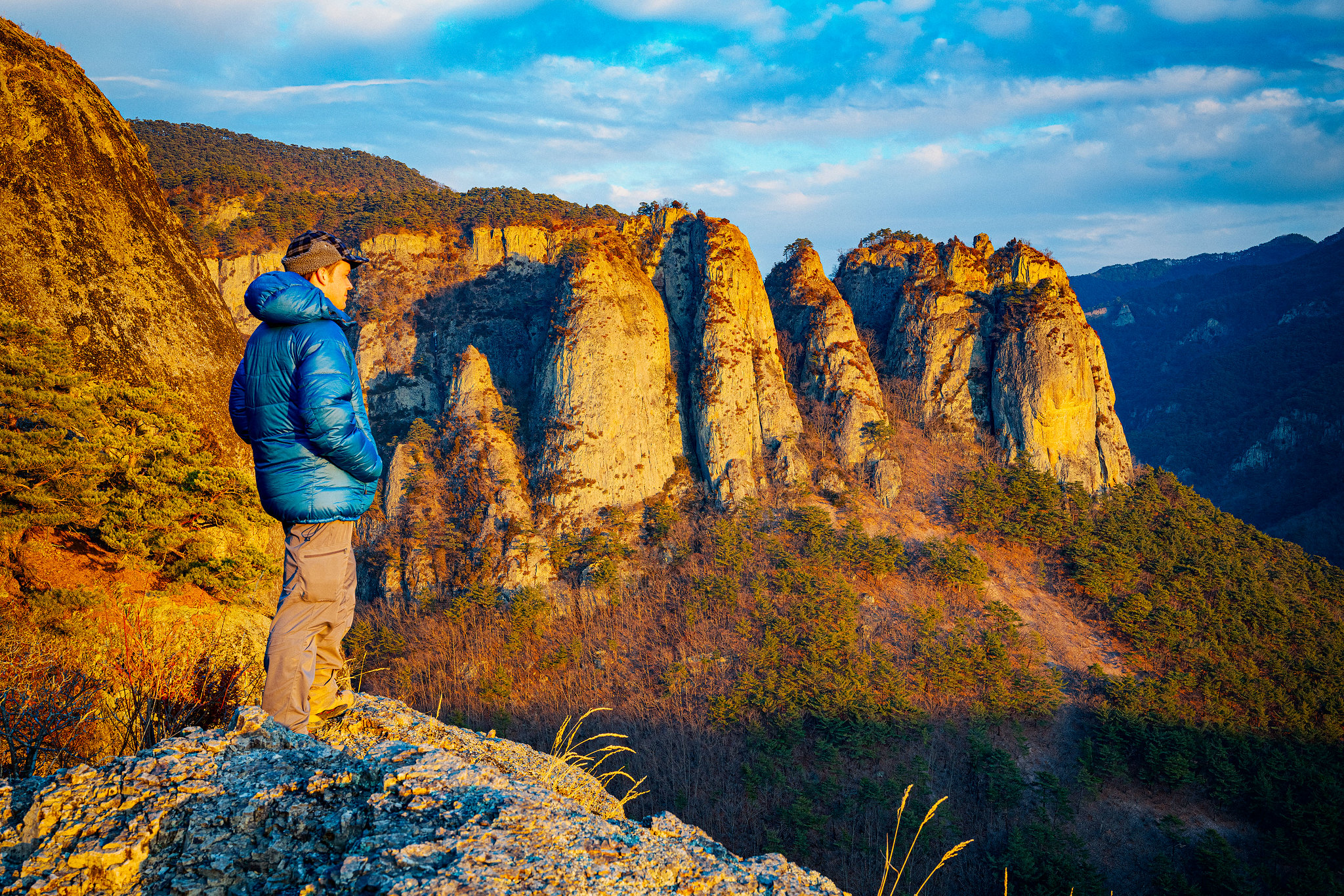
Getting There
Kakao maps phone app will work for driving. I haven't used the public transportation to get here, but it exists.
Red Tape
Nothing beyond what is already listed on the main Korea page. This park does not close as often due to the low elevation.
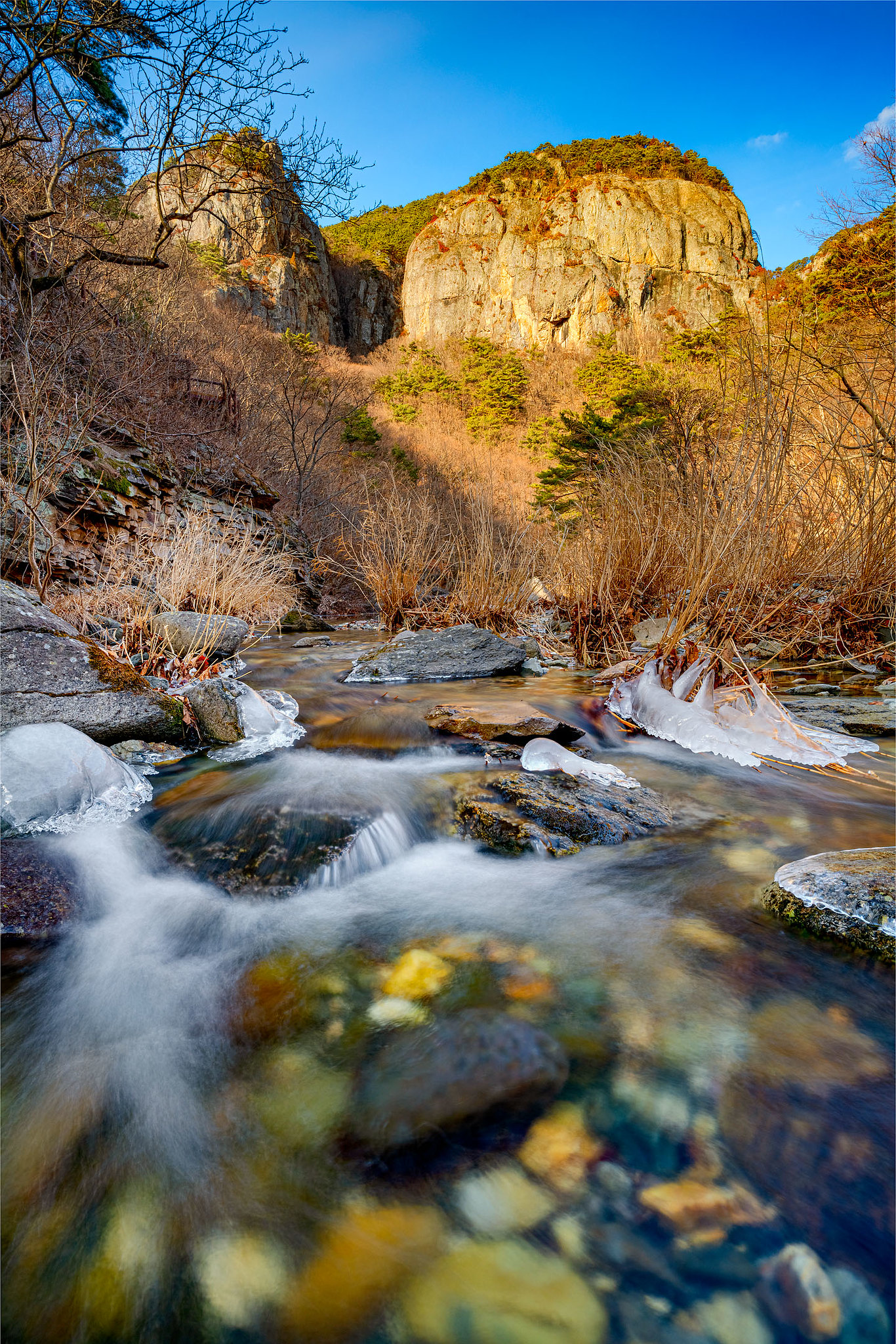
River valley in Juwangsan
Camping
There is no wilderness/back country camping permitted here, just like all the other National Parks. There is a campground near the entrance that you can reserve online at the website listed on the Korea parent page.
Temple at the park entrance, Junwangsan iteslf in the skyline. The campground was just off camera right.
